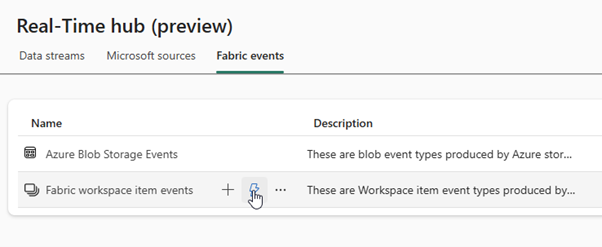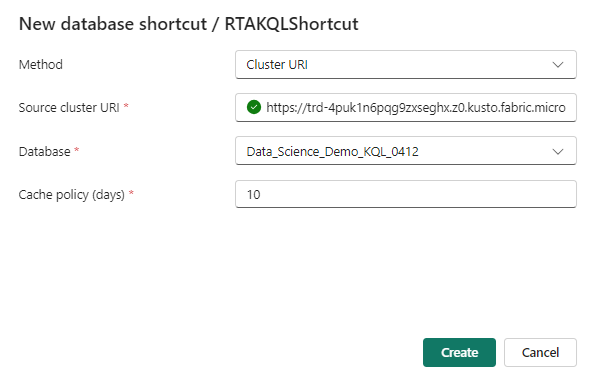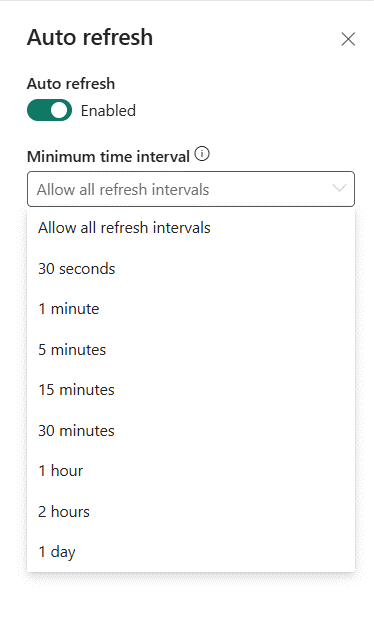
About real-time analytics (RTA)
Real-time analytics captures, processes, and analyzes data instantly. Think of it as having your finger on the pulse of your data, constantly monitoring, and reacting to changes in real time. Whether it's website traffic, social media engagement, or stock market fluctuations, real-time analytics provides immediate insights for informed decision-making. Advantages of RTA are detailed further below:
• Accelerate and elevate decision making:
Identify trends and anomalies as they happen and respond rapidly. This is crucial in today's fast-paced digital landscape, where every second counts.
• Increase agility and optimize operations:
Adapt and pivot in real-time based on the latest data. Adjust marketing strategies, optimize operations, or personalize user experiences with agile decision-making.
• Improve customer service:
Track customer interactions across multiple channels in real time—from social media to live chat and phone calls—and respond to them. Identify patterns in customer behavior to proactively address potential issues and deliver hyper-personalized recommendations and support.
Current implementation and its challenges
• Scalability and cost management:
As data volumes grow, so do demands on infrastructure and processing power. Building a scalable real-time analytics system requires careful planning and investment.
• Maintaining data accuracy:
Ensuring data accuracy and consistency is paramount. In the rush to analyze data in real time, data quality issues can skew results and lead to faulty insights.
• Alerts and actions:
Set up appropriate thresholds, detect complex events, automate response actions securely, and establish feedback loops for effective alerting and actions.
Real-time implementation in Fabric
In the ever-evolving landscape of enterprise data management, Microsoft Fabric emerges as a beacon of integration
and efficiency. This comprehensive platform streamlines the complex processes of data analytics, offering a unified
solution that caters to the diverse needs of modern businesses. From data ingestion to real-time analytics,
Microsoft Fabric encapsulates a suite of services that drive insights and foster informed decision-making.
Microsoft Fabric simplifies end-to-end real-time system setup with low-code/no-code components and AI Copilot
integration, while Apache Kafka delivers real-time data, consolidating changes from source systems and making them
available to subscribers.
 |
We developed a real-time solution using Microsoft Fabric by ingesting data from Confluent Kafka as the streaming data source. This showcases how easily Fabric enables real-time processing and reporting systems.
 |
| Figure 1: Architecture diagram |
Stream sources and
destinations
The real-time hub serves as a central location to manage all real-time components in Fabric, including event streams and KQL databases. This hub is to your streaming sources what OneLake is to your data.
The 'Microsoft Sources' tab displays all configured Azure sources in Fabric, such as event hubs, Change Data Feeds (CDC), and IoT hubs. The 'Connect' option allows for the immediate setup of new ingestion from existing sources, like tables from SQL sources to an event stream.
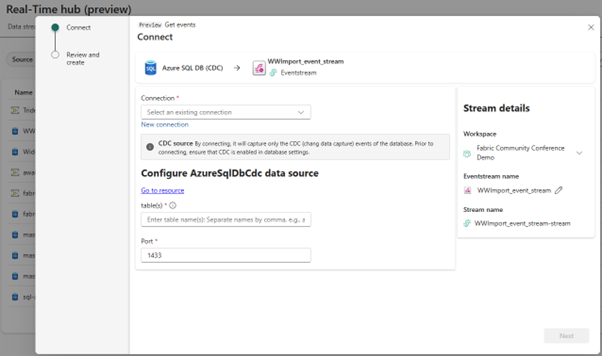 |
The 'Get Events' capability connects to stream sources like Azure event hub, Confluent Cloud Kafka, and CDC
using a low-code/no-code interface, straight out of the box. Streams can then be sent to destinations like
Lakehouse and KQL database, or to Fabric’s Reflex for alerts and actions.
 |
You can also preview the data within event streams using the Real-Time hub.
 |
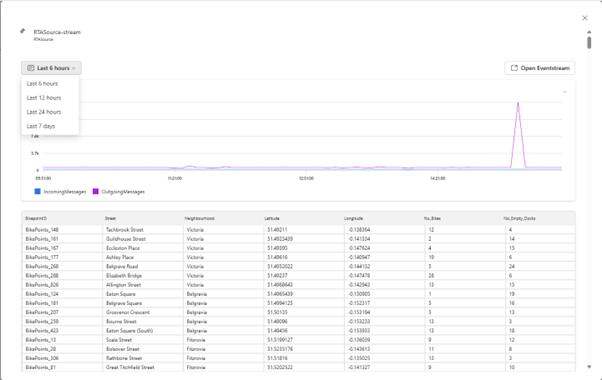 |
Fabric Workspace Item events
'Fabric Workspace Item events' has been enabled as a source, allowing specific actions when a Fabric item is created, updated, or deleted, and even on the success or failure of these events. You can also set up actions such as sending notifications via email or Teams or running a notebook in a Fabric workspace.
|
Event stream interface
Once connected to an event stream, the data can then be sent to a Lakehouse, KQL database, Reflex, or Custom
endpoints. The destination can be provisioned from the event stream interface itself with the ability
to define the database, table name, and data type. KQL databases are preferred for real-time reporting due
to their optimization for large datasets.
Event streams enable you to define standardized transformations applied to data before it is written to storage. You can manage event fields by adding or removing fields, updating field names, applying filters, and performing unions and group by operations. The transformed data can then be made available as a derived event stream for organizational consumption.
Event streams also support content-based routing, facilitating data segregation and management across multiple KQL databases.
 |
Event houses for managing data stores
Event houses can store multiple KQL databases, sharing compute and cache resources. Data is indexed and partitioned during storage, allowing for high-speed analysis and granular reporting. Event houses also introduce the shortcut feature to KQL databases. With the integration of AI Copilot, you can transform data effortlessly, even without detailed knowledge of the KQL language.
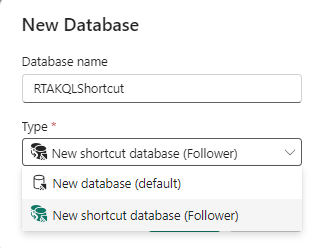 | ||
|
Reporting on data
In addition to Direct Query reports built with Power BI on KQL databases, Microsoft Fabric now supports real-time dashboards on KQL databases. This allows reading data from KQL databases using queries or existing KQL query sets as data sources. You can enable auto-refresh for the dashboards and set minimum frequency and default refresh rates to ensure the latest data is always displayed.
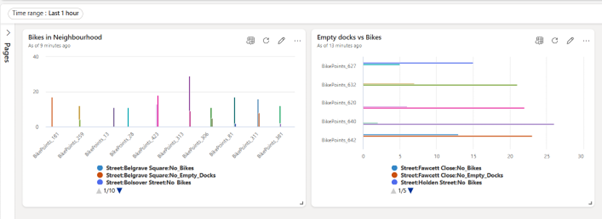 | ||
|
It also enables the ability to set alerts based on the data displayed in the tiles, using event groups to track metric variations.
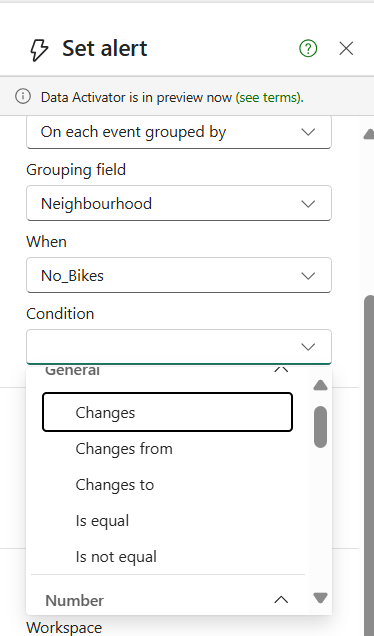 |
Cost optimization
Event houses are optimized to reduce costs by sharing resources across KQL databases. You can define a
minimum number of CUs for service guarantees, with additional CUs consumed based on usage.
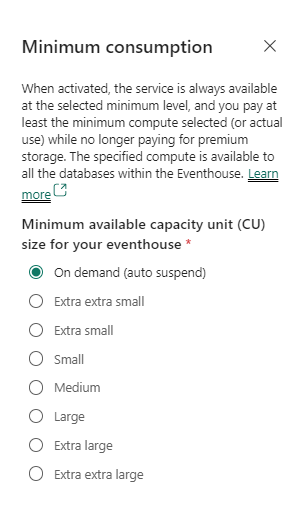 |
Integrated monitoring
Monitor metrics for all KQL databases within the event house, including storage consumed, activity, errors,
and specific user actions and commands from the last 7 days.
 |
Real-time data availability for analytics
KQL data can be made available in a Lakehouse for real-time analytics. Data Wrangler then offers
quick insights, cleaning, formatting, and normalization.
Copilot integration with notebooks further transforms and enriches data for analytical reporting.
Direct Lake mode enables fast reporting on Lakehouse data, with a default Semantic model for
immediate Power BI report creation using Copilot.
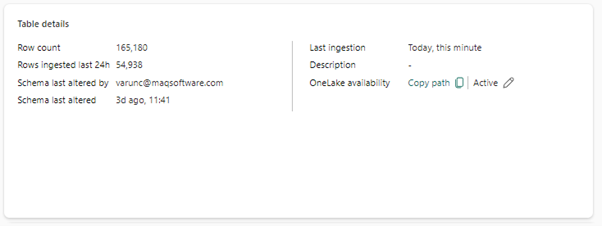 |
Advantages of a Fabric solution
• Ease of setup and management:
With its low-code SaaS approach, Microsoft Fabric simplifies the setup and management of real-time solution components. By integrating with Copilot to assist with coding, Fabric enables the creation of an end-to-end solution in just minutes. All resources within the pipeline share the same Fabric capacity, streamlining resource management across the entire framework.
• Maintaining data accuracy with integrated alerts and actions:
The integration of Reflex with event stream allows for real-time event tracking and the triggering of alerts and custom actions based on incoming data. Any bad data can be isolated within the event stream and redirected to a separate KQL database/table, ensuring that even real-time reporting is based on accurate data.
• Automated scaling with performance guarantees:
Fabric SKUs can automatically scale based on CU consumption. Combined with the ability to define a minimum size for the event house KQL database, this ensures a guaranteed level of performance for real-time reporting while optimizing costs.
-----------------------
Contact Sales@MAQSoftware.com to learn more about how
MAQ Software can help you achieve your business goals with Microsoft Fabric. Explore our Fabric services and Marketplace offerings today.

